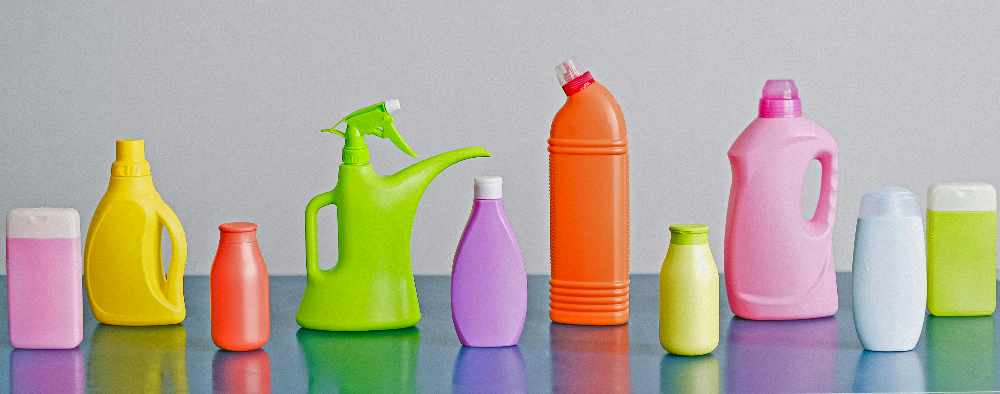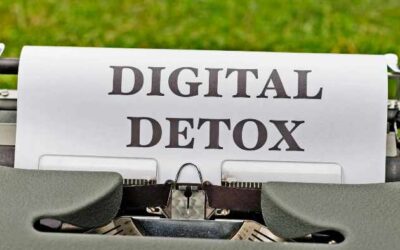by Susan Stamper •
Content Marketing Manager, ChiroHealthUSA •
Remember when buying shampoo was easy? You grabbed the one that smelled the best, maybe had some “extra shine” promise on the label, and called it a day. 🧴✨
Now, walking down the cleaning or personal care aisle feels like walking through a chemistry lab with an identity crisis. Every bottle is screaming “plant-based,” “eco-friendly,” “free-from,” “cruelty-free,” and probably “approved by unicorns.” Meanwhile, you’re just standing there wondering if anything is actually safe to use — or if you’re about to accidentally moisturize yourself with something that’s low-key messing with your hormones.
Welcome to modern consumerism: a place where the things that make our homes smell clean, our hair shiny, and our skin soft might also come with invisible baggage — chemicals that can sneak into our systems and quietly wreak havoc over time. 😬
So how safe are our everyday products, really? What do those impossible-to-pronounce ingredients actually do once they hit our skin, our food, or our air? And how can we make better choices without needing a chemistry degree or selling a kidney for “all-natural” detergent?
Let’s talk about the sneaky side of our stuff — and how to outsmart it.
🚿 The “Clean” Illusion
Here’s the kicker: the very products that promise to make life cleaner might actually be introducing new toxins into our bodies and homes.
Many of them contain endocrine-disrupting chemicals (EDCs) — a fancy way of saying things that mess with your hormones. These are the chemicals that mimic or block the signals your body sends to control everything from your mood to your metabolism.
Think of your hormones like a group text — everyone’s chatting, things are flowing, your body knows what’s what. Then an EDC jumps in and starts spamming the chat with nonsense, confusing everyone and throwing off the whole conversation. 😅
🧪 The Usual Suspects
Meet the “Mean Girls” of your bathroom cabinet and cleaning closet:
- Phthalates – Found in fragrances, plastics, and anything that “smells pretty.” They’ve been linked to fertility issues and developmental problems. (Yes, even that candle you love might be part of the problem.)
- BPA (Bisphenol A) – Common in plastics and canned food linings; mimics estrogen and can disrupt hormonal balance.
- Parabens – Used to preserve cosmetics and lotions; another estrogen copycat. They extend shelf life, not necessarily your life.
- Triclosan – Once the “it girl” of antibacterial soaps, now known for messing with thyroid function and potentially making bacteria stronger.
Basically, these chemicals are like bad roommates — they sneak in quietly, overstay their welcome, and leave a mess you have to deal with later.
😬 When Hormones Go Rogue
So, what actually happens when these invisible freeloaders make themselves at home in your system?
EDCs can throw off your body’s delicate hormonal balance — leading to issues like weight changes, fatigue, fertility struggles, thyroid problems, and even mood swings that make PMS look like a walk in the park.
It’s not usually one big exposure, either. It’s the cumulative effect — the lotion you use every morning, the water bottle you drink from, the takeout container you microwave. Tiny drips, day after day, adding up like a leaky faucet you didn’t realize was costing you gallons. 💧
🧠 Information Overload (and the “Wellness Police”)
Here’s where it gets messy: the internet.
If you’ve ever googled “toxin-free living,” you know it’s a black hole of fear, judgment, and very expensive recommendations. Half the advice says “throw out everything and make your own soap from Himalayan salt and moonlight.” The other half says “relax, it’s fine, everything causes cancer anyway.”
Neither of those extremes is helpful. 🙄
The truth? You don’t have to panic, but you also shouldn’t ignore it. Awareness doesn’t mean paranoia — it just means being a little more mindful about what you bring into your home (and onto your skin).
💡 Small Swaps, Big Wins
Let’s be honest — most of us aren’t going to move into the woods and start making deodorant out of baking soda and good intentions. But small changes can make a huge difference.
Try this:
🏡 In the Home
- Ditch plastic food containers and switch to glass or stainless steel.
- Skip heating food in plastic. That “microwave safe” label? Lies. 🔥
- Go fragrance-free when you can — or choose natural scents like essential oils (in moderation).
🧴 In the Bathroom
- Look for “paraben-free” and “phthalate-free” on labels.
- Simplify your routine. Fewer products = fewer chemicals.
- Try cleaner brands that actually list what’s inside (and that list shouldn’t read like a chemistry exam).
☕ In Your Lifestyle
- Say “no thanks” to printed receipts — they’re often coated in BPA.
- Drink from reusable metal bottles instead of plastic.
- Eat more real food and less packaging. (Bonus: it’s cheaper and tastes better.)
You don’t have to go zero-waste overnight. Just think “less junk, more intention.”
🌎 Why It Matters Beyond You
These chemicals don’t just affect us — they end up in our water, our soil, and our food supply. So when you make cleaner choices, you’re helping more than just your body. You’re helping the planet, too. 🌍
Every bottle swapped, every ingredient questioned, every company held accountable — it adds up. We vote with our wallets every time we shop.
And honestly, that’s a kind of power worth using.
✨ The Bottom Line
This isn’t about fear. It’s about empowerment.
You don’t have to throw everything out and start living like a pioneer — just make small, smart shifts. Learn what’s in your products, make better choices when you can, and give yourself grace when you can’t.
Our lives are busy. We’re doing our best. But when it comes to what we put in, on, and around our bodies — a little awareness can go a long way.
Because if there’s one thing worse than a sneaky chemical in your shampoo, it’s realizing it’s been there this whole time and you never even knew. 😉
Sources
Comptes Rendus Biologies. (2017). Endocrine disruptors: From scientific evidence to human health protection. https://comptes-rendus.academie-sciences.fr/biologies/articles/10.1016/j.crvi.2017.07.004/
Vandenberg, L. N., et al. (2012). Hormones and endocrine-disrupting chemicals: Low-dose effects and nonmonotonic dose responses. Environmental Health Perspectives, 120(4). https://ehp.niehs.nih.gov/doi/full/10.1289/ehp.1104052
Karpuzoglu, E., et al. (2013). The impact of endocrine disruptors on the immune system. Reproductive Toxicology, 36, 1–12. https://www.sciencedirect.com/science/article/abs/pii/S1538544217300822
Gore, A. C., et al. (2015). EDCs and the hypothalamus, pituitary, and gonadal axes. Endocrine Reviews, 36(6). https://link.springer.com/article/10.1007/s13679-017-0240-4
Raut, S. A., & Angus, R. A. (2010). Endocrine-disrupting chemicals in aquatic environments. Chemosphere, 78(6). https://www.sciencedirect.com/science/article/abs/pii/S0161813X12001313
Mouritsen, A., et al. (2016). EDCs and female reproductive health. Hormones, 15(2). https://link.springer.com/article/10.1007/s11154-016-9329-4
Jensen, T. K., et al. (2021). Exposure to EDCs and human fertility. Journal of Endocrinology Research, 11(3). https://link.springer.com/article/10.1007/s12595-021-00414-1
Witorsch, R. J., & Thomas, J. A. (2009). Personal care products and endocrine disruption. Toxicology in Industrial Health, 25(4–5). https://journals.sagepub.com/doi/full/10.1177/0036850419826802
Houlihan, J., et al. (2008). Pollution in people: The toxic burden. Science of The Total Environment, 408(20). https://www.sciencedirect.com/science/article/abs/pii/S0048969708005846








